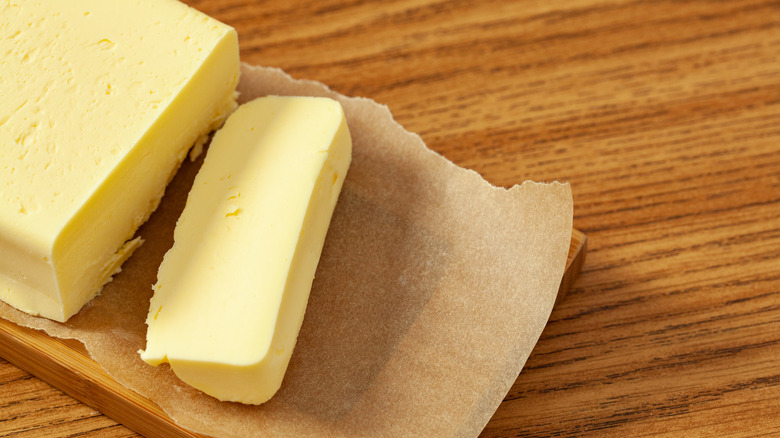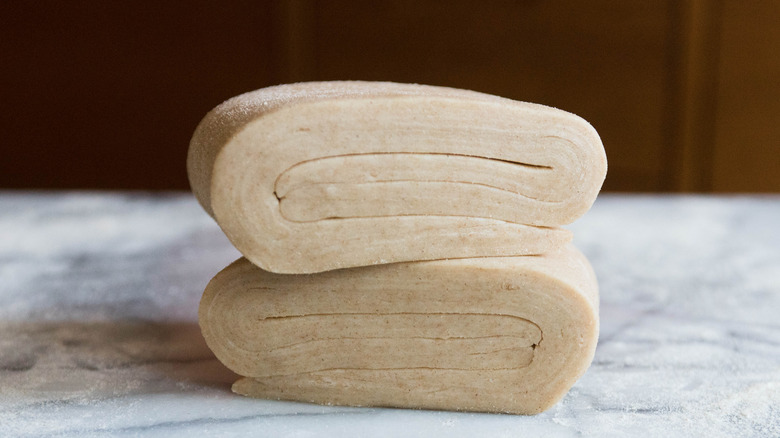Why You Should Use European Butter For Pie Crust And Pastries
In her quest to understand and recreate a specific French cookie recipe, James Beard award recipient Dorie Greenspan embarked on a journey to discover why different butters didn't appear to be created equal. As she puts it: "[The] butter I bought in Paris had more taste than American butter — a distinctive tang and nuttiness — and I knew that its texture was firmer yet more supple. I knew that when I left butter on the counter of my New York apartment, it would sag and soften, while butter in my Paris apartment would keep its square shoulders as well as its taffy-like flex," per the New York Times.
Greenspan says that the answer lies in the amount of butterfat that is needed to be present in the serving of dairy fat before it could be called "butter" by manufacturers. On either side of the Atlantic, that answer still applies today. When butter is labelled as European-style, it is another way of saying that the product contains at least 82% butterfat, which will account for its hyper-buttery taste. By contrast, most of the butters that are churned in America have a minimum of 80% butterfat, per Think USA Dairy.
While a 2% difference in butterfat may not sound like much, having more fat and less moisture can mean that it melts as quicker. This is an important quality to look for when you're making pie crusts and pastries, per The Kitchn.
European butter's high fat content makes it perfect for pastries
Because European-style butter contains more fat and less water, it melts faster and leaves more of a buttery flavor. This makes European butter the perfect ingredient for laminated pastries, such as croissants, per Culinary Crafts. The same can also be said of pie crusts which also benefit from European butter's richer flavor. It is no surprises then that chef and CEO Maury Rubin uses European butter for his baked goods, including Danishes. He says that it is worth it for home bakers making these pastries to use butter with a higher fat percentage, per HuffPost.
However, there is a place for American butter in baking. King Arthur Baking points out that in some cases, having higher butterfat can leave baked goods drier and a bit more greasy. The lack of moisture found in American butter is especially critical when making certain baked goods such as biscuits. Per Greatist, the moisture in American butter turns into steam as the dough bakes. This is one of the reasons that biscuits turn out airy, light, and fluffy; different from laminated pastries and some pie crusts.
Simply put, American and European butter should be viewed as different ingredients, per Food52. The next time you're about to bake a tasty treat, make sure you check to see which butter would be best for your recipe.

